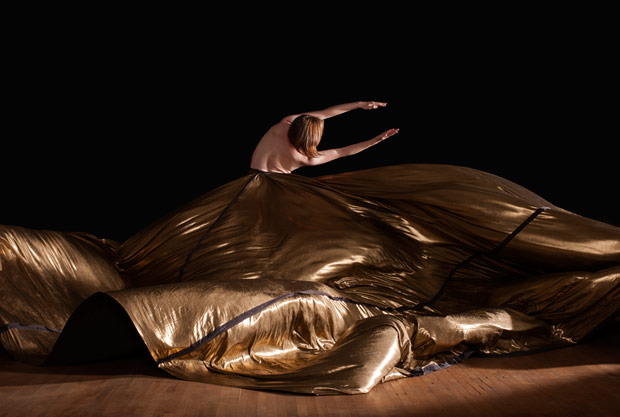
© Lora Robertson. (Click image for larger version)
Satellite Collective
Water, I Can Help You, Individuate, A Pair of Ideal Landscapes, Edie Leaves Twice, Music for Dance, and Walls are Here to Fall
New York, BAM Fisher
3 September 2015
satellitecollective.org
www.bam.org
Hive Mind
It seems almost unkind to complain about an undertaking as touchingly sincere as Satellite Collective’s recent performance at the BAM Fisher, a small black box theatre down the street from the Howard Gilman Opera House. As the name implies, the participants are a group of likeminded musicians, singers, spoken word artists, visual designers, choreographers, and dancers, “collaborating as equals, globally and virtually.” (The young choreographer Troy Schumacher was once a member.) They’re young, in many cases talented, serious and dedicated to their craft. The pieces on the program speak of melancholy, loveliness and yearning. And yet despite – or because of – these very qualities and good intentions, the evening has a maudlin, precious feel; almost every piece is a mini-portrait of emotion, but none approaches its subject with any freshness, whether through dance, music, or poetry.
The one exception is a short solo (Individuate) by the New York City Ballet dancer, Devin Alberda, danced by Michaela Mann and bathed in an otherworldly glow by Brandon Stirling Baker. The music, as in many of the works, is by Nick Jaina; here it consists mostly of doodling and feedback on the electric guitar, played by Mr. Jaina himself. (It goes well with the movement.) It’s a weird little number, not great choreography exactly, but odd enough to be interesting, and a complete departure from the friendly, artisanal esthetic of the other pieces. Mann, a compact dancer of great focus, begins the dance folded up in a ball, clad in a metallic bodysuit (by Reid and Harriet) that makes her look like a sexy android. Then she begins to flutter and expand, like an amoeba. She twists and screws her body into knots and then flips over, belly straining upward toward the light. When the musical pulse quickens, she spins like a top and stops, knock-kneed, staring out at the audience. Mann is a compelling performer, and Alberda, whose first piece I believe this to be, is surprisingly unfettered by his classical background. (I last saw him flicking his legs in tricky petit allegro steps by Bournonville.) The solo is a stylish novelty piece and, as such, it works.

© Lora Robertson. (Click image for larger version)
What to say about the rest? The music throughout, by Jaina and others, tends toward two modes, sorrowful or drivingly rhythmic, often based upon repeating, arpeggiated patterns. (When will we be freed from the lingering after-currents of Minimalism?) A short film by Lora Robertson (Edie Leaves Twice) set to a non-linear scenario by Kevin Draper, is pleasing to look at, driven by stop-motion effects and lovingly-filmed objects that could have been picked out at a well-stocked Anthropologie: a stack of playing cards, a wooden table veined with beautiful deep grooves, fading roses, a red matchbox car, and a toy robot made out of bolts and rods. As pretty as a Wes Anderson movie but without the zany plot, the short film turns out – upon further investigation of the program – to be the story of “a brave young woman [who] leaves New Orleans in a heated rush… [while] around her, the South erupts in ecological disasters.” Somehow, I managed to miss both the woman and the disasters.
Earlier there had been a poetic monologue (I Can Help You) written and performed by Stelth Ulvang, a curly-haired young man in glasses and suspenders (but no shoes), who mused on the meaning of life and its resemblance to a boxing match and the flight of a flock of pigeons. A pas de deux by Esmé Boyce, A Pair of Ideal Landscapes, was dominated by close-ups of the female dancers’ face, gazing inquisitively into the middle distance and a second woman being engulfed in silvery fabric. The evening ended with another dance, this one for an ensemble of four, all excellent, choreographed by Manuel Vignoulle, formerly of Cedar Lake Ballet. (The designs, elegant black-and-white projections of New York, were by Kevin Draper.) The choreography was reminiscent of Cedar Lake’s style: brawny, breathy, filled with sliding, pulling bodies and punctuated by passages of complex, muscular partnering. Unfortunately, Walls Are Here to Fall was done in by its overwrought tone – bewildered stares and at several points silent screams and rhythmic yelling, as well as by the plodding relationship between movement and music.
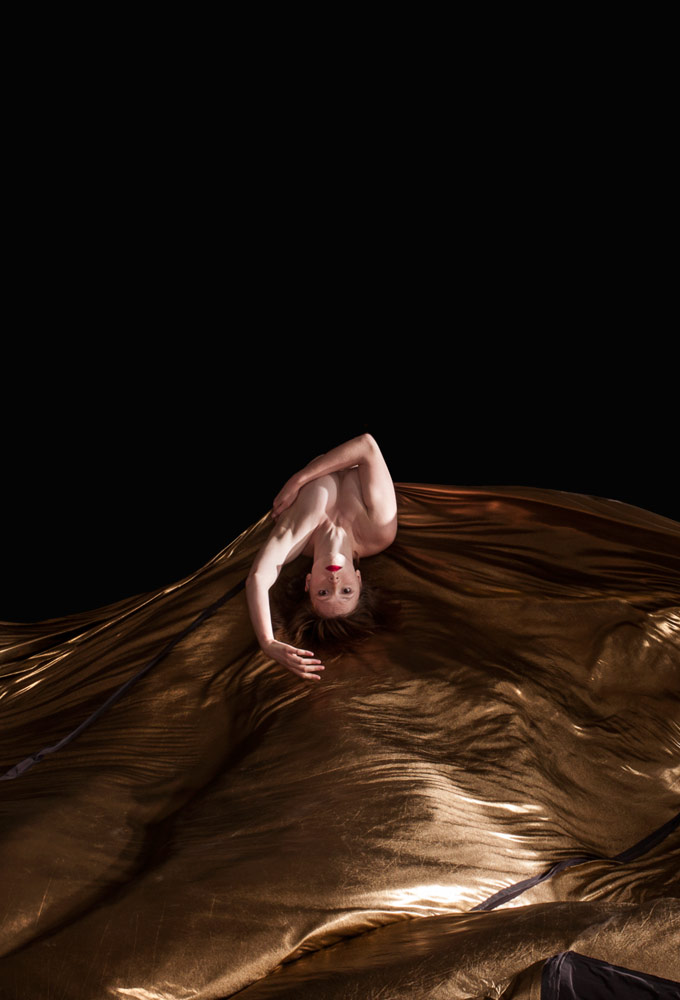
© Lora Robertson. (Click image for larger version)
Collaboration can be a wondrous thing, but it’s no guarantee.









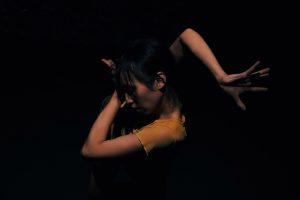
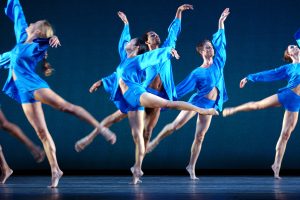


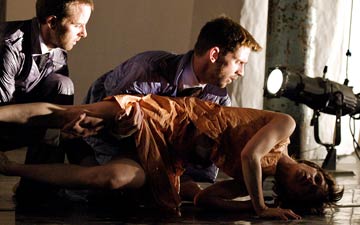
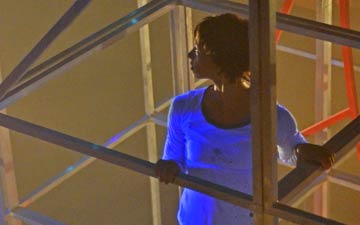
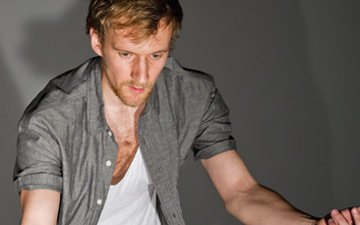
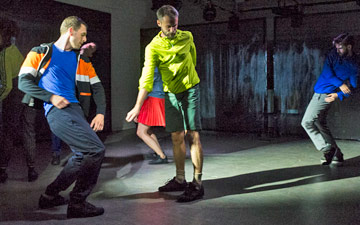
You must be logged in to post a comment.